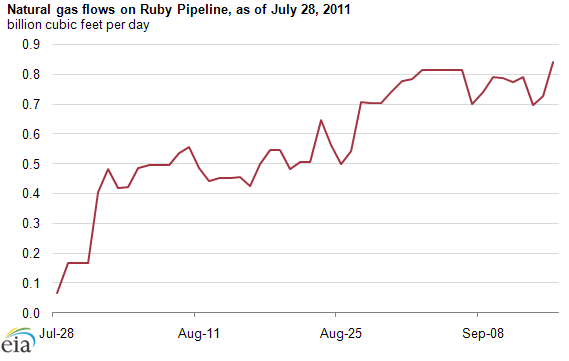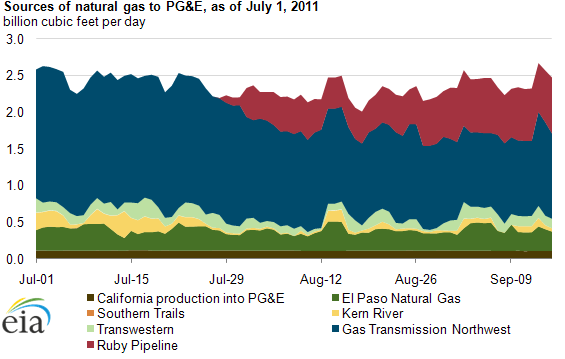
Ruby Pipeline ramps up rapidly to supply natural gas to Northern California

Natural gas flows on the Ruby Pipeline (Ruby) have ramped up rapidly since the start of commercial operations on July 28, 2011. Ruby, a new high-pressure, 680-mile natural gas pipeline that links Wyoming natural gas supplies mainly to markets in California, currently delivers about 0.8 billion cubic per day (Bcfd) of natural gas to an interconnect with Pacific Gas & Electric (PG&E)—the major distributor of natural gas and retail power in Northern California—and provides about 30% of PG&E's 2.5 Bcfd of average daily system supply of natural gas.
PG&E's overall natural gas needs have changed little since late July when Ruby began flowing natural gas. However, Ruby's share of total natural gas supplied to PG&E rose from less than 0.1 Bcfd to over 0.8 Bcfd in a little over a month. Increasing flows from Ruby to PG&E have displaced natural gas delivered to Northern California by the Gas Transmission Northwest (GTN) pipeline (see chart below). Flows on GTN in early July were over 1.8 Bcfd; by mid-September GTN's flows sank to about 1.0 Bcfd. Natural gas flows on other pipelines such as El Paso Natural Gas, Southern Trails, and Transwestern have not varied as much following the advent of Ruby.

Note: Chart includes small delivery volumes into the PG&E system from the Southern Trails pipeline.
Tags: California, natural gas, pipelines, states